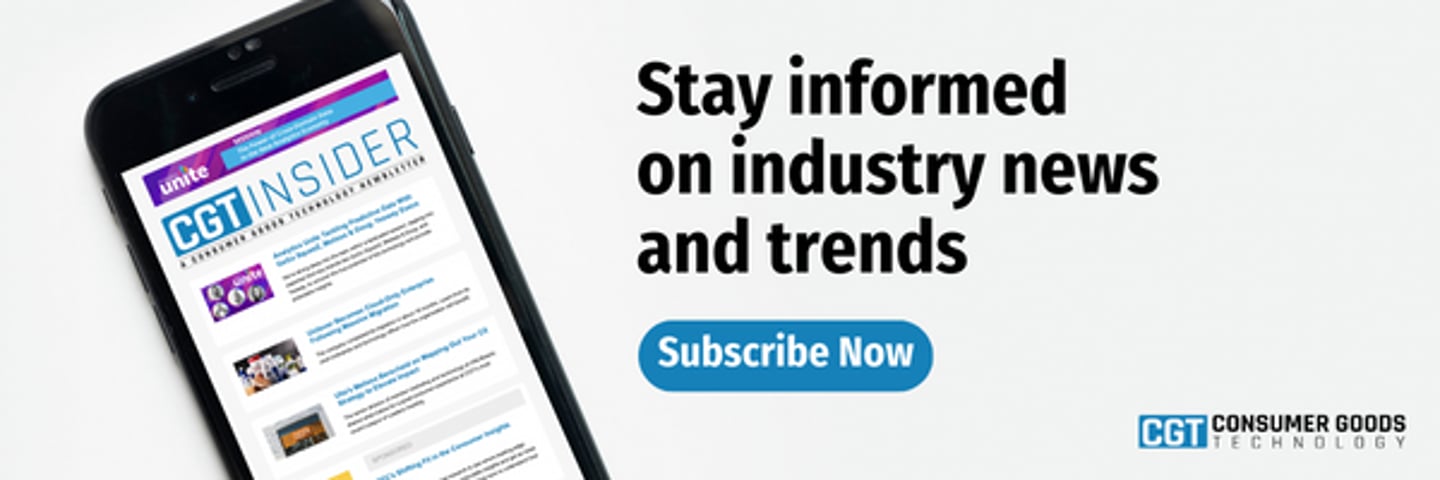CPG Tech Leadership: 12 Tips for New CIOs
New CIOs, particularly those joining the CPG industry, are entering a world full of challenges and responsibilities. Ensuring that operations function smoothly, and that IT teams operate both productively and efficiently, is critical to a successful start.
Recent events, ranging from the COVID pandemic to geopolitical conflicts, have changed the consumer goods world, particularly the food and beverage sectors, says Jim Bresler, director of product management, food and beverage, for products manufacturing and automation software provider Plex.
As 2023 shifts into gear, fresh challenges will inevitably emerge. To ensure long-term success in their key leadership role, new CPG tech leadership should consider the following 12 expert tips:
1. Unlock access to data and insights
Strive to become an analytics expert. In these difficult times, top CPG companies need to assure their business customers that products will be available and delivered as ordered, on time, and meeting quality standards.
It's difficult to achieve these goals without access to data-driven insights, especially if a company is understaffed or working on reduced budgets in response to a contracting economy, Bresler says. It's the CIO's job to ensure that actionable insights are always available to the business leaders who need them to make informed decisions.
2. Double-down on automation
Automation is necessary to expand operations and value in a contracting economy burdened by a competitive recruitment environment. "Time-consuming operations, like inventory purchasing and asset maintenance orders, can be automated to free time for plant floor and top floor employees," Bresler says.
"When organizations automate repeatable tasks, they not only increase productivity but also make jobs at their facilities more attractive to the next generation of workers, who see technology as core to their future."
3. Conduct a software appraisal
Closely examine and evaluate your firm's enterprise resource planning (ERP) and manufacturing execution system (MES) software. These are the key tools that integrate facility production and inventory data with back-end systems.
An appraisal is especially necessary for CPG brands that manage multiple facilities, all of which should be linked by a unified ERP system for end-to-end enterprise-wide visibility.
"Historic inventory and production data can then be analyzed for insights to effectively strategize and automate manufacturing execution and ensure customer requirements are being met without overspending on excess inventory or production at any facility," Bresler says. "Finding cost saving efficiencies is essential for any business, but particularly important in tight-margin industries like food and beverage."
4. Be an IT advocate
Make it a point to demonstrate to C-level counterparts that technology has evolved from a cost center into a growth-stimulating force. "It will instill confidence in the rest of the enterprise that the right tech investments will translate to a positive long-term impact," says Chris Bedi, chief digital information officer at customer service and experience software provider ServiceNow.
When advocating IT's role to C-level colleagues, be careful not to get carried away by IT solutions that have yet to establish a solid track record. "Avoid coming in with a new technology to solve everything," warns Craig Susen, chief technology officer of business management advisory firm Unify Consulting.
5. Support inventory stability
In these difficult times, maintaining a stable inventory is a major challenge. "We've shifted from the problem of inventory shortages with high demand for products early in the year to surplus inventories with low demand for products today," Bresler says.
While consumer packaged goods offerings will always be in-demand, the rate and fluctuation of supply and demand shocks should be concerning to any CIO struggling to enable agility, especially in an inflationary economy that has consumers worried about household budgets and discretionary spending, Bresler notes.
6. Explore alternative talent options
When building IT teams, look beyond the typical tech talent bench. "Roles that typically sit outside the IT duties, like research and insights, user experience, and product owners, should now be considered table stakes," Bedi says.
7. Collaborate with colleagues
A new CIO should work closely with the enterprise leadership team to help them plan and drive the company’s strategy. It's important to build genuine relationships with those leaders as quickly as possible, Susen says. "By building relationships, a CIO will understand the critical operations and the leaders’ priorities," he explains.
8. Highlight IT's bottom-line value
CIOs should show their C-suite counterparts how IT investments provide bottom-line benefits by identifying bottlenecks, removing complexities, and improving performance. "Likewise, we need to invest in and own the value measurement and not just delegate that task to our finance function," Bedi says.
9. Be transparent and realistic about new technologies
A CIO should proactively communicate and manage the potential risks that accompany new digital technologies.
"When it comes to operations transformation, compliance, governance, or data privacy, we should clearly define any potential risks and have a plan in place to mitigate them," Bedi says.
10. Leverage actionable insights
Use the power that integrated back-end systems such as ERP and MES offer. "These essential tools can provide actionable insights that help CIOs make a demonstrable positive impact at their new company," Bresler says. "Moreover, these systems empower the level of tracking and traceability that's increasingly required by the FDA and other regulatory bodies."
11. Don't neglect operational technology
Besides various IT technologies, CPG CIOs must grapple with operational technology (OT) — hardware and software that detects or causes a change through the direct monitoring and/or control of industrial equipment. A CIO needs to ensure that facility hardware, such as manufacturing tools and Internet of Things (IoT) sensors, are seamlessly meshing with IT systems to provide an accurate outlook on facility operations and production.
"Make sure you’re regularly meeting with both your IT and OT leaders, and that those stakeholders have opportunities to engage in strategy discussions to support future transformation," Bresler advises.
12. Keep moving forward
Never become complacent in your success. IT innovation and expansion are ongoing quests. "Technology is always advancing, and market dynamics are always fluctuating," Bresler notes. "CIOs need to stay on top of market and technology trends to truly provide value to their organizations by driving constant progress and innovation, which feeds a culture of continuous improvement across the organization."









